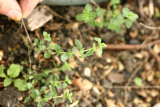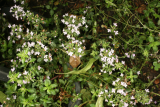Additional notes (click to expand)
Medicinal
In traditional herbal medicine;
The leaves, and especially the essential oil contained in them, are antiseptic, deodorant, disinfectant and expectorant]. The plant can be used fresh at any time of the year, or it can be harvested as it comes into flower and either be distilled for the oil or dried for later use[Bown. D. Encyclopaedia of Herbs and their Uses. Dorling Kindersley, London. 1995].
http://www.pfaf.org, https://pfaf.org/user/Plant.aspx?LatinName=Thymus+pulegioides
Geographical distribution
- Europe, Eastern Europe, Baltic States
- Europe, Eastern Europe, Belarus
- Europe, Eastern Europe, Ukraine
- Europe, Middle Europe, Austria
- Europe, Middle Europe, Belgium
- Europe, Middle Europe, Czech Republic
- Europe, Middle Europe, Germany
- Europe, Middle Europe, Hungary
- Europe, Middle Europe, Netherlands
- Europe, Middle Europe, Poland
- Europe, Middle Europe, Switzerland
- Europe, Northern Europe, Denmark
- Europe, Northern Europe, Great Britain
- Europe, Northern Europe, Norway
- Europe, Northern Europe, Sweden
- Europe, Southeastern Europe, Albania
- Europe, Southeastern Europe, Bulgaria
- Europe, Southeastern Europe, Greece
- Europe, Southeastern Europe, Italy
- Europe, Southeastern Europe, Romania
- Europe, Southeastern Europe, Yugoslavia
- Europe, Southwestern Europe, France
- Europe, Southwestern Europe, Portugal
- Europe, Southwestern Europe, Spain
Thymus pulegioides L.
Family: LAMIACEAEGenus: Thymus
Species: pulegioides L.
Common names: Large Thyme; Broad Leaf Thyme; Greater Wild Thyme
Distribution summary: Europe
Habit: Shrub
Hardiness: H5 - Hardy; cold winter
Garden status: Not currently grown
Reason for growing: Medicinal

